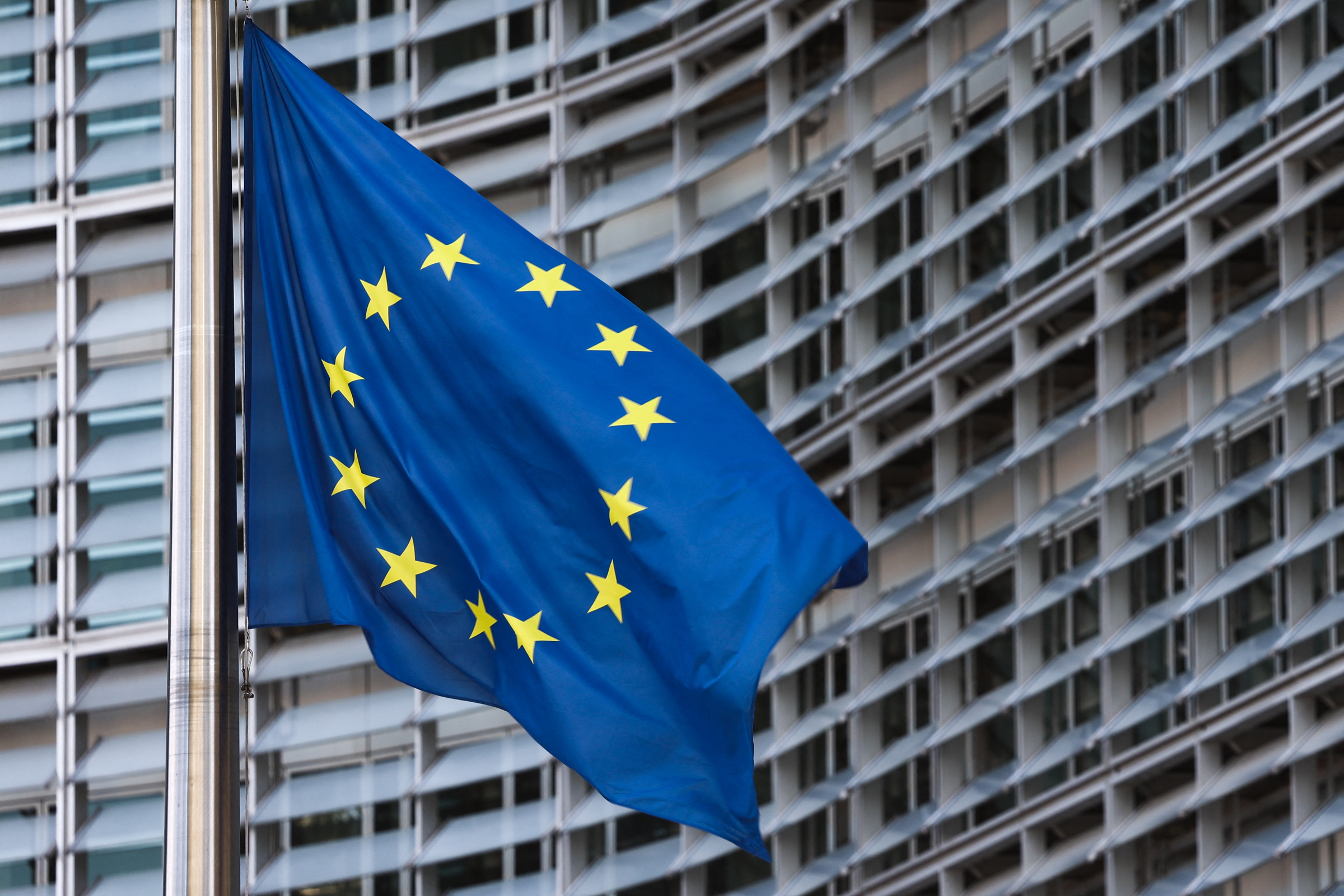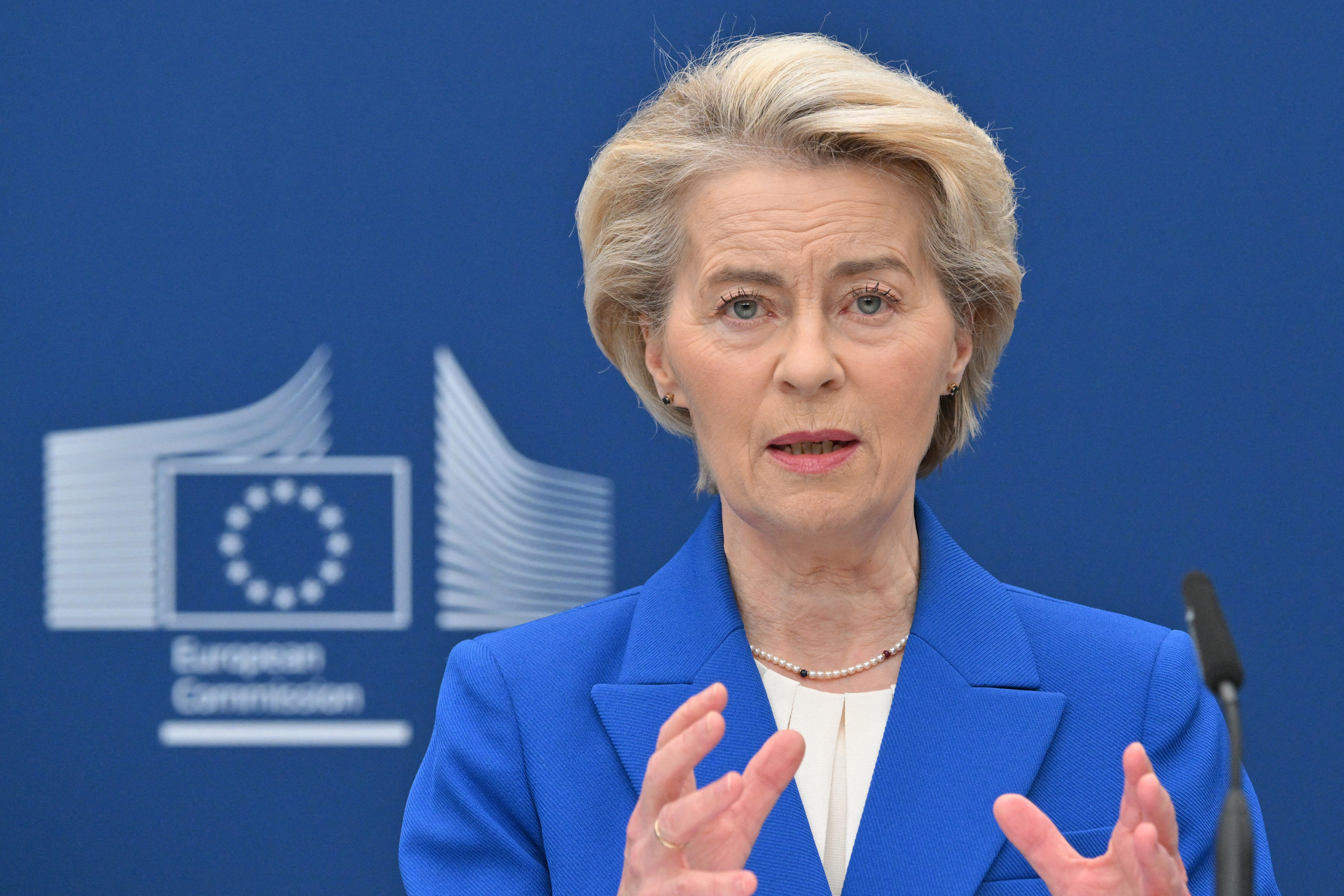After a call with European trade negotiators on the morning of 20/7, US Commerce Secretary Howard Lutnick assessed that there were still "many opportunities" to reach an agreement.
"The world's two largest trading partners are negotiating with each other. We will have an agreement. I'm confident of that," he said in an interview on CBS's "Face the Nation".
Previously, on 12/7, US President Donald Trump released a letter to European Commission (EC) President Ursula von der Leyen, announcing a 30% tariff on European Union imports starting 1/8. Europe is currently subject to a general 10% tariff, a 25% tariff on automobiles, and a 50% tariff on steel and aluminum imported into the US.
Trump also recently announced a 50% tariff on copper and threatened new tariffs on pharmaceuticals and semiconductors starting next month. In total, the EU estimates that US tariffs currently cover about 442 billion USD, equivalent to 70% of the bloc's exports to the US.
 |
EU flag in front of the European Commission headquarters in Brussels, Belgium in 2022. Photo: AFP |
EU flag in front of the European Commission headquarters in Brussels, Belgium in 2022. Photo: AFP
The US and the EU have the world's largest bilateral trade and investment relationship, accounting for nearly 30% of global goods and services trade and 43% of global GDP. Last year alone, transatlantic trade reached 1,960 billion USD. Trump has repeatedly criticized the EU for what he considers an unfair relationship due to the trade deficit in goods, even though the US has a services surplus with the bloc.
In its June baseline scenario, the European Central Bank (ECB) believed it was in a "favorable position," assuming US tariffs would be only 10%, and the worst-case scenario would be 20%. However, the increase to 30% will deal a heavier blow to the eurozone economy, according to Dutch investment bank ING.
"The rising euro and new tariff threats are increasing the risk of deflation in the eurozone, which could push inflation below target and increase the likelihood of further ECB rate cuts in the future," said Carsten Brzeski, ING's global head of macro research.
Michal Baranowski, Poland's deputy minister of economic development and technology, considers the EU to represent "the most important economic relationship" for the US, noting that Washington "gains or loses from this relationship as much as Europe does." With the two economies still negotiating an agreement, Baranowski said the bloc is pursuing a four-part strategy.
First, good-faith negotiations with US officials. One of the bloc's hopes is to renegotiate auto tariffs. The Financial Times reported that the EC's negotiating team wants the US to reduce auto tariffs. They have proposed reducing tariffs to 10% on imported American cars if the Trump administration lowers its current 25% rate to below 20%.
Second, the EU is preparing countermeasures in case negotiations fail. "We already have countermeasures in place for both steel and aluminum tariffs, as well as an initial 72 billion euro response package for reciprocal tariffs," Baranowski said on CNBC's "Europe Early Edition" on 18/7. This package primarily targets industrial goods like Boeing aircraft, automobiles, and bourbon.
Europe has also approved retaliatory measures against Trump's metal tariffs. This 21 billion euro package targets politically sensitive US states with products like soybeans from Louisiana—home of House Speaker Mike Johnson—other agricultural products, poultry, and motorcycles.
Additionally, according to Bloomberg, a growing number of member states want to activate the anti-coercion instrument (ACI) if negotiations collapse. The ACI empowers officials to impose tariffs on major US tech companies or implement targeted restrictive measures such as blocking US companies from accessing certain market areas and restricting their ability to bid on public procurement contracts.
Third, the EU continues to monitor the progress of other countries' tariff negotiations with the US. "Not necessarily to coordinate, but to grasp the situation of other countries that are also on the front lines," Baranowski said.
In the fourth step, Europe is seeking to increase its overall competitiveness, not just economically. Last week, Ursula von der Leyen presented a 2,000 billion euro budget package, "the most ambitious ever" and larger than any previously speculated estimates.
"This budget is more strategic, more flexible, and more transparent. We are investing more in our responsiveness and in our autonomy," she said.
 |
EC President Ursula von der Leyen in Brussels on 3/4. Photo: AFP |
EC President Ursula von der Leyen in Brussels on 3/4. Photo: AFP
The EC president said that the experience of recent crises inspired this budget plan. During six years in Brussels, she has faced Covid-19, the conflict in Ukraine, soaring energy prices, record inflation, competition from China, severe natural disasters, cyberattacks, and most recently, tariffs from President Donald Trump.
This series of challenges has placed an unprecedented burden on the bloc's common budget, to the point that von der Leyen was forced to ask 27 national leaders to approve a financial supplement in the middle of her first term.
"Each time (a crisis), it has been very difficult to react quickly and with sufficient financial resources," she acknowledged. The EC president noted that 90% of the current budget is fixed, making adjustments extremely limited.
However, the budget package requires the approval of all 27 member states, so it is expected to undergo a tense negotiation process. "No country is ready to accept the budget as it is," commented Danish Minister Marie Bjerre.
As the rotating president of the EU Council, Denmark will lead meetings on the new budget package until the end of this year. "We will have a long discussion, there are clearly different views on how to structure the budget, and this will also be a difficult process. But Europe needs a budget," she said.
Phien An (according to Reuters, CNBC, FT, Bloomberg)












